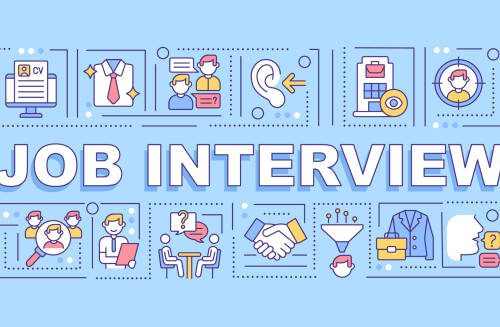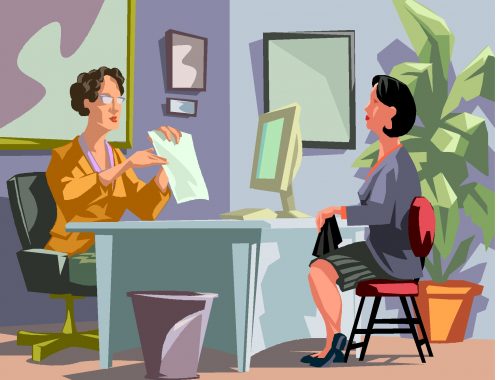Weight of the Word
You never remember how hard it is to talk about yourself until you’re sat in front of a row of strangers and asked what makes you so special compared to that guy who was just in before you. Interviews, dreaded, terrifying interviews which make you question if you even want this job or not. It’s stressful if you go in blind. Luckily for me, I had it all sorted out. ‘The STAR method is a structured manner of responding to a behavioral-based interview question by discussing the specific situation, task, action, and result of the situation you are describing.’ [1] By executing the ‘STAR’ technique, I was able to have a structure to my answers.

As well as this, to analyse my experience, I will be using Boud’s model as I can understand my experience – what was it; the result of my experience – what happened; and how my experience will be used – what will I take from it going into the future.

Questions (Curtesy of The Open University)
SITUATION
Five minutes to wait.
Five minutes to prepare.
Five minutes to reflect upon my life and decide which events could show me off.
I waited for the call from inside the room to bring me in. Before me lay ten minutes of gruelling interrogations: Who was I? Why am I here? What good can I be to a company like that?
I took my seat and introduced myself with confidence. These were my peers, fellow students who I had talked to outside of this. They knew my name, they knew what I was studying in university – we were all in the same course after all, but they didn’t know me as an employee.
It’s strange. Talking to strangers can be the easiest thing in the world sometimes. You know you won’t ever see them again so if you slip up, say something stupid, embarrass yourself, you can walk away knowing they won’t ever find you again to remember your mistake. But students from your class? People you see every week? The stakes were raised. Not only had I to impress my faux employer, but I had the added stress of faking an interview with people who’d see me next Tuesday.
With a slight shake in my leg, I tried to still myself. I wasn’t nervous, per say, just feeling the pressure to perform well.
TASK
I had ten minutes for my interview. Something I was worried about was running out of things to talk about, or not being able to describe what happened well enough, but I knew if I took everything at a relaxed pace, allowed myself time to consider my answers before rushing in and answering immediately, I would be able to handle any question they had for me.
Because I had no idea as to what they would ask me, there was only so much I could prepare for. This would reflect interviews in the industry as I would not know what questions would be thrown to me so it would lead to quick thinking and the ability to prepare adequate answers.
ACTION
They had question after question lined up for me. Each in turn asked me something about myself.
What is your experience within this role?
What would you like to gain from this job?
Where do you find yourself in five years’ time?
I answered honestly and to the best of my abilities, providing evidence where I could and bringing in previous examples of my experience in hopes to properly cover all my bases.
Then came the question: Can you give us an example of a time when things didn’t go to plan and what you did to fix it? I sat there, and I knew I could answer it, yet nothing was coming to mind. I asked for a moment to think as I scraped through my mind of the past seven years in hopes that some example could come quickly to mind. Finally, after tense seconds, the memory returned to me.
It was in our first year final film where we found ourselves stuck for the next shots framing. At the time, we only had a shotlist, no storyboard so I took it upon myself to draw up a quick, rough storyboard and we were able to finish filming that day. I tried to apply the STAR technique the best I could, situating my peers on the day and providing my actions and what came from it.
RESULT
Before I knew it, the time was up. The other interviewees and I exited the room and stood outside as our feedback was prepared. When we got back, I looked over the comments and was pleasantly surprised. I thought I may have repeated myself a few times, yet it appeared that it was all alright and it actually helped some of my answers. I spoke confidently and I understood the job description I was applying for. I showed good examples of learning from mistakes and could portray myself as a leader as well as the ability to work in teams.
Two comments I received to improve on was that some details were missing from my explanations and that I was too restless. In future to combat this, I would take more time to consider my answers and try to follow the STAR technique more closely to better structure my answers as that would make me consider all the details and events for an even better response. Through practise with this technique, I would improve my answers. And to stop being restless, I’ll just sit on my hands.
I learnt a lot from the simulated interview. From the pressure of presenting myself to answer every question thoughtfully. It may have been scary at first but through practice, I can perfect how to handle an interview. It does not mean that I need to have thought of every question beforehand, yet, I should know what to expect and use that as a starting point. Through the execution of STAR I can see an improvement in my answers and responses too.
[1] The star method S T A R situation – VA wizard (no date). Available at: https://www.vawizard.org/wiz-pdf/STAR_Method_Interviews.pdf (Accessed: February 24, 2023).
Tips on using the star technique to answer job interview questions (no date) Enterprise. Available at: https://careersblog.enterprise.co.uk/tips-on-using-the-star-technique-to-answer-job-interview-questions/ (Accessed: February 24, 2023).
Boud, D., Keogh, R. and Walker, D., 2013. Promoting reflection in learning: A model.
In Reflection: Turning experience into learning (pp. 18-40). Routledge.
Simulated Interviews
My second interview
You May Also Like

To Be Or Not To Be – That Is The Interview Question
23 February 2023
BE A S.T.A.R 🌟
14 February 2023
